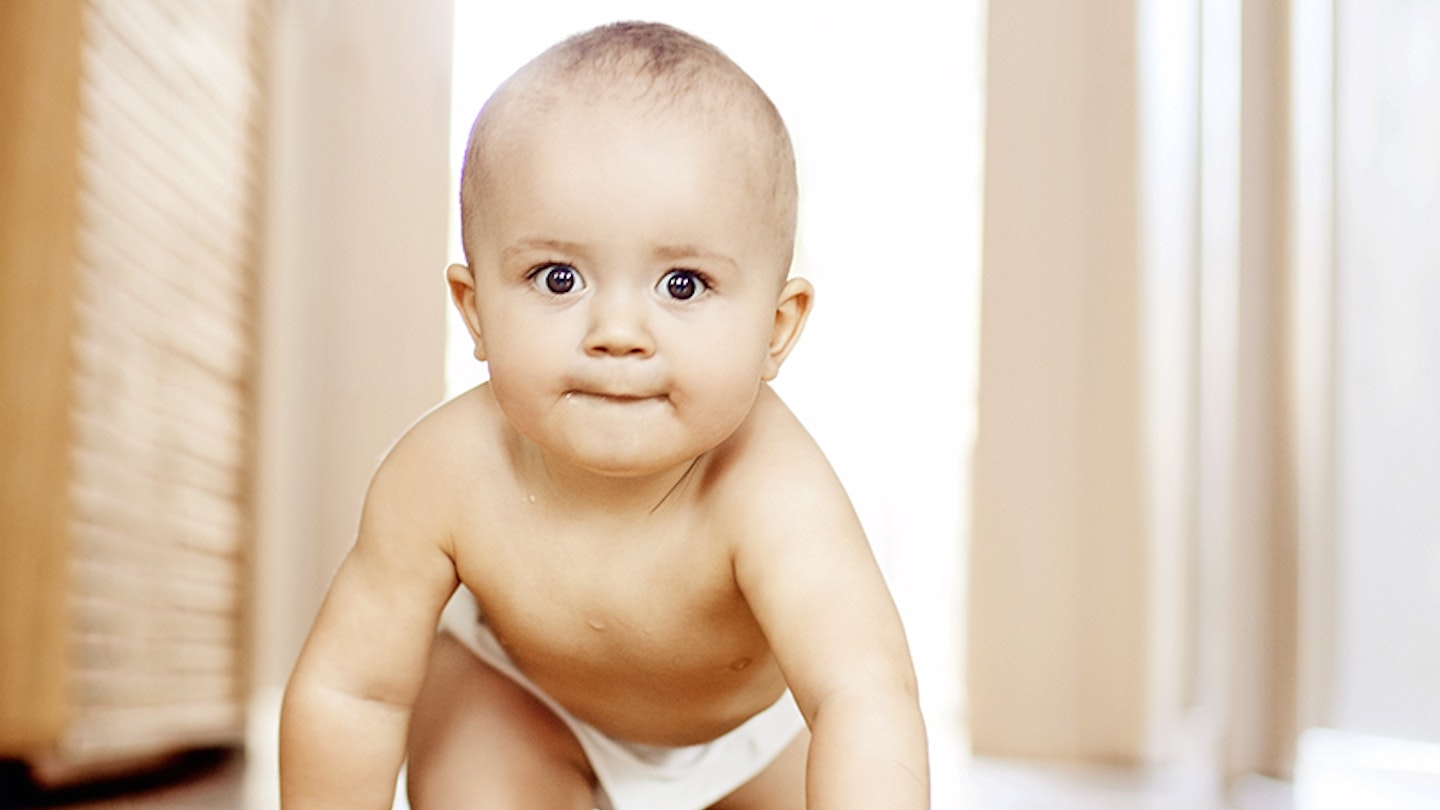You’re already aware of those major milestones your baby will reach one day, such as rolling over, crawling and walking. But did you know there are hundreds more skills and mini-milestones she’ll master along the way? And if you share in her joy of movement, you can make a real difference to how she develops.
With our help, you’ll be able to support your baby’s efforts, and celebrate together endless little moments of success, because your attention and interest will motivate her like nothing else.
Pushing with both hands
So much is happening in your baby’s development right now, and she’s growing every day. During tummy time, she will look perplexed when she pushes with both hands together and her body slides backward, away from her intended goal to move forward!
On a smooth floor, such as lino or wood (not ceramic tiles), lay your baby on her front, and lie down to face her. Push down, and a little forward, with both hands so your body slides back away from your baby. She will find this game funny as you create more space between you.
Belly-crawling
Before your baby can use her hands and feet to move herself forwards, or belly-crawl, she needs to master moving one half of her body at a time. Watch closely and you’ll notice her toes are flexed to push off, and she reaches with her hand and arm on the same side of her body. This is one half of the belly-crawling pattern. Soon, she’ll work out how to alternate the two sides of her body and crawl forwards to you on her belly.
Lying on the floor with your baby, both on your tummies, place a toy in front of her but to her right side, just out of her reach. Then try again, but with the toy slightly to her left side. She is mastering smooth transitions between both sides.
Watch how she communicates
Sitting up frees your baby’s hands for more expressive gestures. Watch for her raising both arms overhead to show her delight, clapping her hands together to express her pleasure, and rotating her forearm with her palm uppermost to invite you to play. Your baby will have unique ways of expressing herself, whether it’s a quizzical look or an attentive posture – watch her and see if you can interpret the meaning in her signature expressions!
Creeping forwards
Now your baby can coordinate both sides of her body, she works out how to use them together. Watch how she learns to move an arm and a leg from opposite sides of her body together.
Your creeping baby will enjoy playing this game of ‘catch and chase’.
With both you and your baby on hands and knees, wait until she focuses on you, and then begin creeping forwards away from her. After creeping a short distance, look back at your baby. She will get the idea of the game and creep to catch you up. Try to creep in the same way as your baby and you’ll understand just what a balancing act it is to co-ordinate all the different actions of your body. With your hands directly under your shoulders and your knees under your hips, reach forward with your right hand and bring your left knee forward for support. Now reach with your left hand and your right knee, making a diagonal connection through your body.
